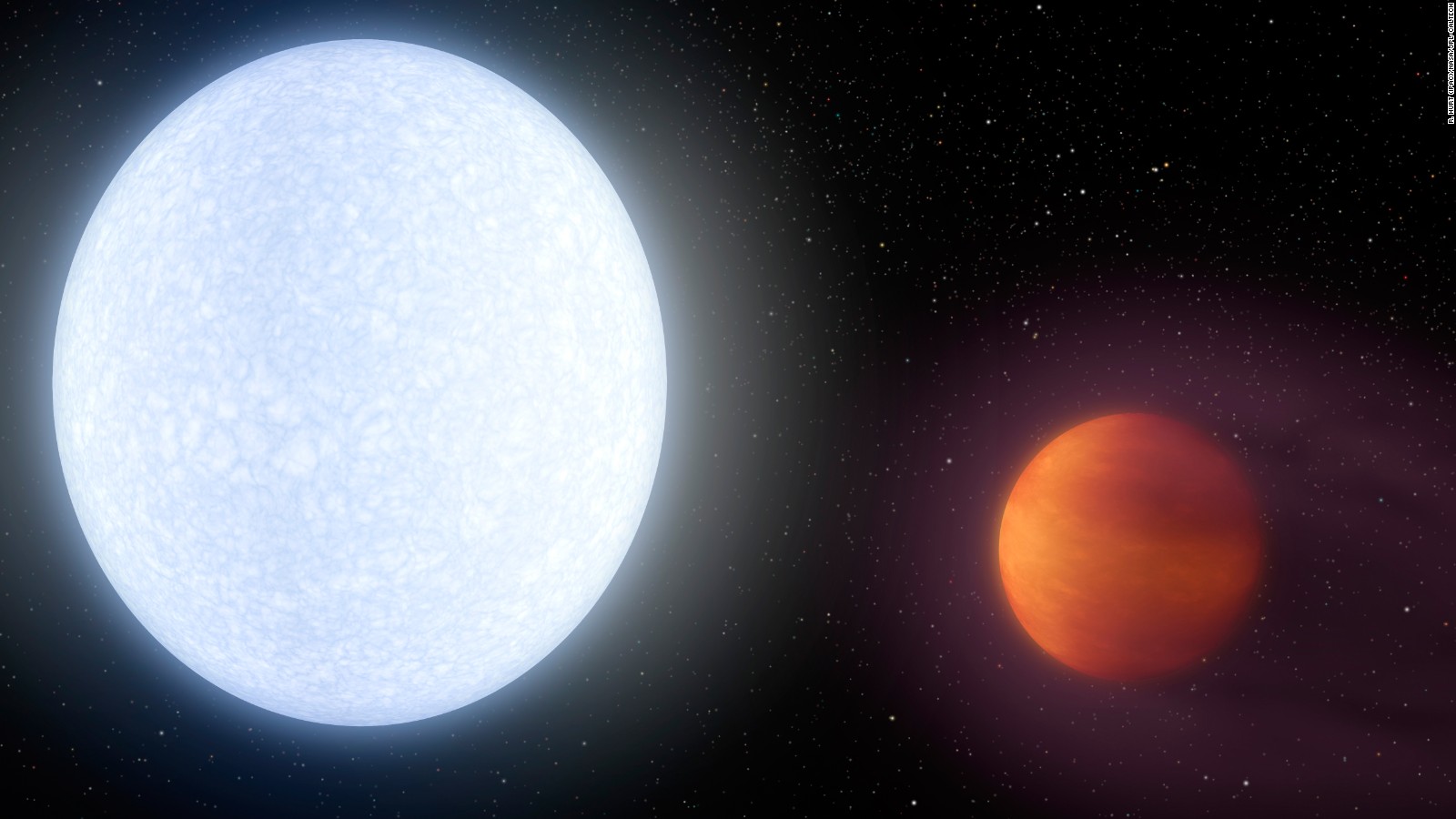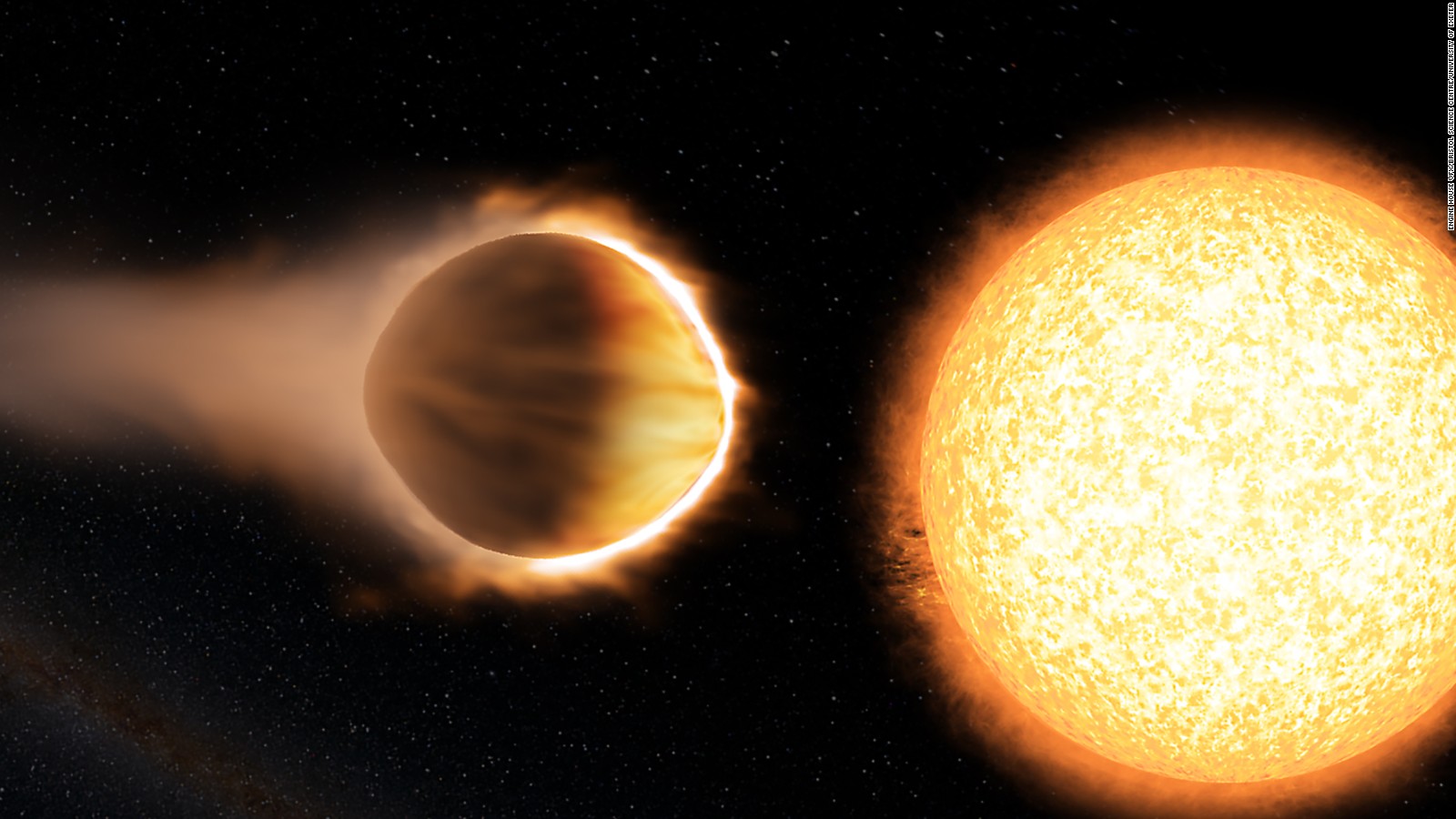HAT-P-11b, about the size of Neptune and four times larger than Earth, was found in the Cygnus constellation.
The planet is considered a "warm Neptune," with an average temperature of 1,022 degrees Fahrenheit. For reference, Neptune is the farthest planet in our solar system from the sun, making it one of the coldest, and its average temperature is negative 353 degrees Fahrenheit.
HAT-P-11b is 20 times closer to its star than Earth is to the sun. Its atmosphere is full of helium, swollen like an inflated balloon. And much like a balloon caught in the wind, helium is escaping from the atmosphere in an extended cloud.
Helium, although rare on Earth, is the second most common element in the universe after hydrogen. It's present in Jupiter and Saturn and is widely thought to be detectable in the atmospheres of exoplanets. But it was only found in the atmosphere of a gas giant exoplanet called WASP-107b this year. The helium itself was hard to detect because the infrared signature of the element is out of the range for instruments used.
Now, for the first time, scientists were able to have detailed observation of how helium is escaping from this gaseous exoplanet's atmosphere. The study was published Thursday in the journal Science.
"Helium is blown away from the day side of the planet to its night side at over 10,000 kilometers an hour," said Vincent Bourrier, study co-author and member of the European Research Council's Future of Upper Atmospheric Characterisation of Exoplanets with Spectroscopy project. "Because it is such a light gas, it escapes easily from the attraction of the planet and forms an extended cloud all around it."
What enabled this discovery? A new instrument called Carmenes, which is on the 4-meter ground-based telescope at the observatory of Calar Alto in Andalusia, Spain. Carmenes is a spectrograph, which separates a star's light into the colors that make it up -- not unlike a rainbow. This uncovers the spectrum, a measurement of the number of colors that compose this light.
Though humans can't see any color beyond red when looking at this resolution with the naked eye, the Hubble Space Telescope's infrared eye can see hundreds of colors.
Carmenes can pick up more than 100,000 colors within the infrared.
The spectrum allowed scientists to pick out not only helium's signature but the position and speed of the element's atoms within HAT-P-11b's upper atmosphere.
"This is a really exciting discovery, particularly as helium was only detected in exoplanet atmospheres for the first time earlier this year," Jessica Spake, study author and Ph.D. student in the University of Exeter's Physics and Astronomy Department, said in a statement. "The observations show helium being blasted away from the planet by radiation from its host star. Hopefully we can use this new study to learn what types of planets have large envelopes of hydrogen and helium, and how long they can hold the gases in their atmospheres."
Spake also led the first pioneering detection of helium on WASP-107b this year.
So why is Hat-P-11b balloon-like? The planet's close distance to its star seems to be the main culprit.
"We suspected that this proximity with the star could impact the atmosphere of this exoplanet," said Romain Allart, first author on the study and Ph.D. student at the University of Geneva. "The new observations are so precise that the exoplanet atmosphere is [undoubtedly] inflated by the stellar radiation and escapes to space."
The research team believes that this detection, combined with the other one from earlier in the year, will open up a new way to observe the extreme atmospheres of some of the hottest exoplanets -- and that these observations can be done using ground-based telescopes outfitted with innovative instruments.
"These are exciting times for the search of atmospheric signatures in exoplanets," said Christophe Lovis in a statement. Lovis is the study's co-author and a senior lecturer at the University of Geneva. "This result will enhance the interest of the scientific community for these instruments. Their number and their geographical distribution will allow us to cover the entire sky, in search for evaporating exoplanets."





No comments:
Post a Comment